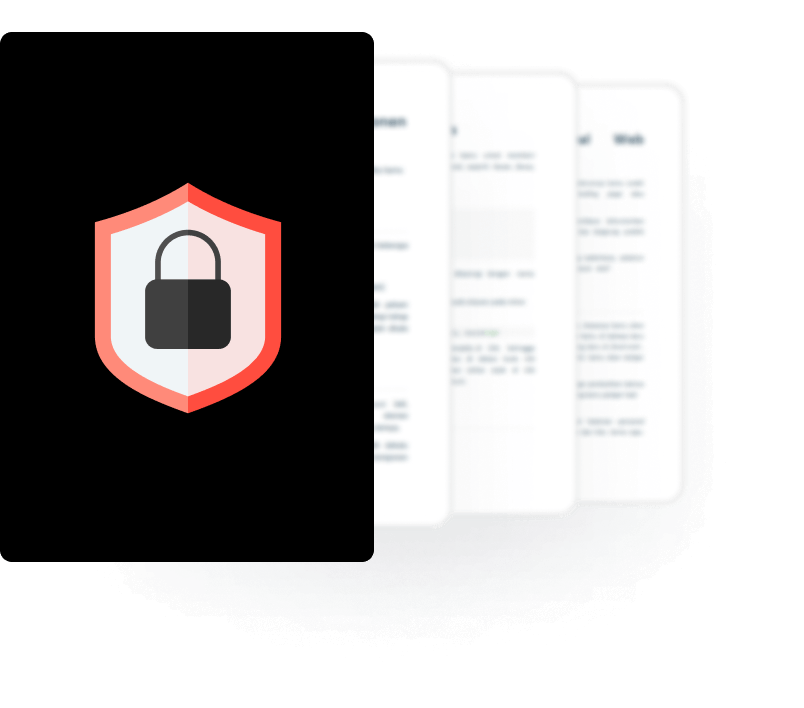
BLOG

BLOG
As mobile apps become increasingly central to business operations and user engagement, securing them from design to deployment has never been more critical. Threat modeling offers an essential first step in identifying and mitigating potential security risks early in the development process. It helps you think like an attacker, spotting weaknesses before they can be exploited.
Quick reality check
• The average U.S. data-breach price tag now sits at USD 4.88 million, a 10% jump in just twelve months [IBM]
• 68% of breaches still hinge on the human element (mis-sent data, reused creds, social engineering) [Verizon]
Mobile apps—living on thousands of unmanaged devices—multiply both these figures.
At Appknox, we've seen that mobile app security often falls victim to a reactive approach—issues are addressed only after they’ve been exploited. Threat modeling flips that script, enabling teams to build security into the architecture from the start.
Here’s a practical threat modeling checklist tailored specifically for mobile app development teams. Whether you’re building Android, iOS, or cross-platform apps, this list will guide your team in making proactive, security-minded decisions.
Skip reactive fixes. Build secure by design. A solid threat model identifies issues early, extending protection before code is shipped.
Follow a structured, game-changing checklist. From drawing data-flow diagrams to quarterly reviews, clear steps keep security in sync with development.
Cross-team involvement is critical. Architects, product leads, security engineers, QA, and PMs all play a role, from defining scope to testing mitigations.
Use STRIDE tailored for mobile. Spoofing, tampering, and elevation threats need mobile-specific additions, not just generic modeling.
Automate your defenses. Turn threat findings into CI checks and Appknox-powered scans so mitigation isn’t just documented, it’s enforced.
Threat modeling must evolve. Treat it as a living document. Refresh it every time you add new APIs, SDKs, or respond to audit insights.
|
Step |
Do this |
Owner |
|
1 |
Draw a Level-1 data flow diagram |
Lead Architect |
|
2 |
Draft security objectives & compliance map |
CISO / Product |
|
3 |
Enumerate modules & entry points |
Tech Lead |
|
4 |
Run STRIDE + mobile add-ons |
Full Squad |
|
5 |
Score risks (L × I × D) |
Security Eng. |
|
6 |
Document mitigations |
Dev+Security |
|
7 |
Add tests to CI + run Appknox scans |
QA / DevOps |
|
8 |
Book a quarterly review |
PM / CISO |
Before identifying threats, clearly define what you're building.
✔ Define the app environment
✔ Identify key components
✔ Create architecture diagrams
Align on what the app must protect and what risks are unacceptable.
✔ Security priorities
✔ Compliance requirements
Break the app into functional units to expose attack surfaces.
✔ Identify functional components
✔ Understand data storage & transmission
Use the STRIDE framework to uncover potential threats:
|
Category |
Questions to ask |
|
Spoofing |
Can users or services be impersonated? |
|
Tampering |
Can code or data be altered by attackers? |
|
Repudiation |
Are actions traceable and logged? |
|
Information disclosure |
Could sensitive data be exposed via logs, memory, or APIs? |
|
Denial of service |
Could excessive use degrade performance or availability? |
|
Elevation of privilege |
Can users gain unauthorized access or permissions? |
Score each threat based on:
Use this matrix to prioritize threats that are high-impact and high-likelihood.
Match each high-priority threat to one or more mitigation controls.
✔ Common mobile app mitigations
Before implementation:
✔ Conduct internal reviews
✔ Test mitigations
Treat your threat model as a living document.
✔ Update when
Appknox is an enterprise-grade mobile application security suite that helps organizations streamline threat modeling through automated, AI-driven security testing integrated across the development lifecycle.
With the help of Appknox, you can identify vulnerabilities in code, APIs, and third-party components while simulating real-world attack vectors. By combining automated vulnerability assessment with manual penetration testing, Appknox provides 360° coverage of mobile app ecosystems.
Implementing a structured threat modeling process is essential for developing secure mobile applications. By proactively identifying and addressing potential threats, organizations can safeguard user data, ensure compliance, and maintain their reputation.
Unlock 80% faster vulnerability detection with automated threat modeling.
Appknox empowers CISOs and security teams to stay ahead of threats and accelerate secure app releases. See Appknox in action today!
Frequently Asked Questions (FAQs)
No. Threat modeling adds value even in small or early-stage apps. It helps uncover basic architectural risks (like insecure data storage or weak authentication) that are costly to fix later. In fact, it's more efficient to start when the codebase is small.
At a minimum, during initial design and whenever there are significant changes, like integrating a new third-party SDK, launching in a new region, or redesigning a core workflow. Mature teams revisit threat models on a quarterly basis or as part of regular security reviews.
A threat model is design-focused. It identifies potential threats before code is written. Security tests (like static analysis or pen testing) are implementation-focused, detecting issues after development. Both are complementary.
No tool can replace critical thinking.
Appknox helps you validate that mitigations are implemented correctly through automated testing. But identifying what threats matter and why—that’s what threat modeling is for.
Start with STRIDE, but augment it with mobile-specific concerns, like reverse engineering, insecure device states, and runtime tampering. OWASP MASVS and the Appknox checklist can help structure your process with mobile in mind.

